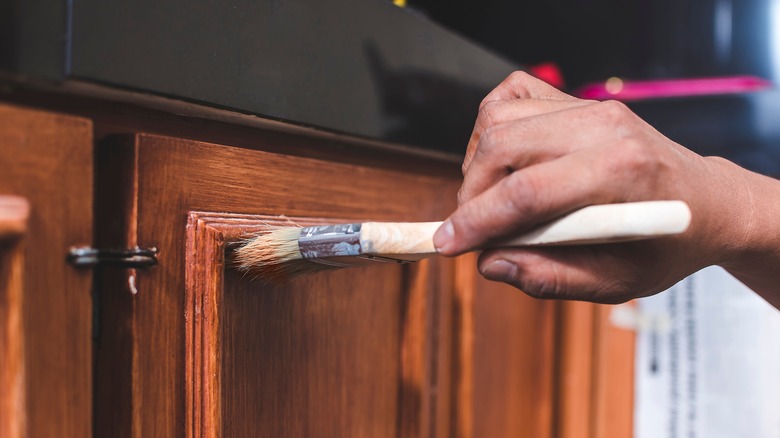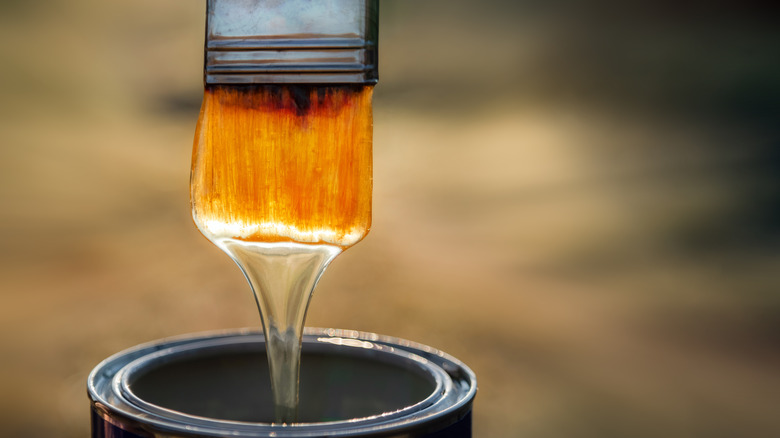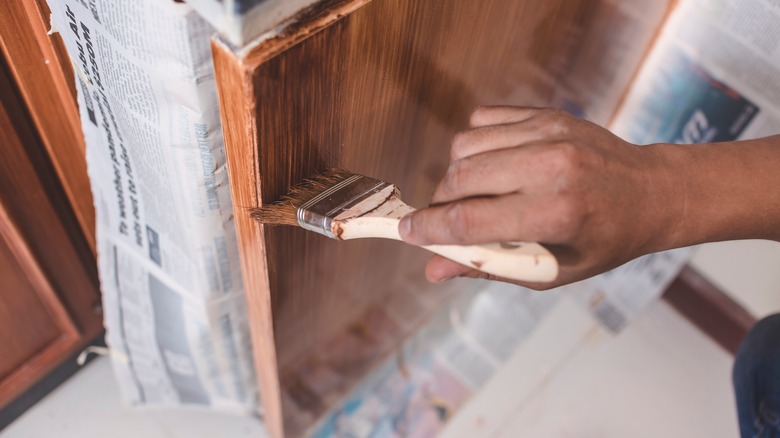Avoid This Major Lacquer Mistake When Changing The Color Of Your Cabinets
It is normal to fully furnish your house and then feel like a do-over some months or years down the road. This desire is heightened when you start introducing other members into the family, such as pets or kids, who are known for being rambunctious hooligans that tear things up. For delicate furniture pieces like your wooden kitchen cabinets, they can go from looking flawless to having chips and splinters in no time with all the activity. A great option for you to change your cabinets' color and protect them at once is to apply lacquer paint. As easy as this sounds, you will want to avoid the major mistake of not having the paint color tested at the store before bringing it home.
Lacquer paint is a finish, sometimes pigmented, that dries extra hard and is known for its durability. It doesn't chip or crack, and it gives even an old set of furniture a brand-new look. It's no wonder why you would go for it to liven up those old cabinets lining your kitchen. However, like most paints, the dried color is different from what you see on the little sample cards they give you at the store. You have to test it out before going through the stress of buying and using it only to find out later that you got the wrong color.
Testing out the lacquer on wood is a prerequisite to purchasing it
When you're going to purchase lacquer paint, banish all the shy bones in your body enough to insist that they test it out before you hand over the cash. The process is simple. The attendant will stroke some of the sample paint onto a strip of wood and let it dry. When you see the true color, you can then adjust it by toning it down or changing the tint before taking the cans with you.
Unfortunately, buying the wrong color is only one of many mistakes you could potentially make when dealing with lacquer paint. There's also the chance that you may not even be able to use it at all. If you are refinishing your cabinets and they were previously painted on with oil-based paint, overlaying it with lacquer would be a bust. This is because lacquer doesn't adhere well to oil-paint surfaces. You'd have to settle for latex-based paint instead.
If you insist on using lacquer paint, then you could do the work of removing the paint using an oil paint stripper. Once that's out of the way, you can go ahead to use the lacquer paint. If you don't want to strip the oil paint, use a primer on it, run over it with latex, and then use the lacquer.
When it comes to lacquer paint, less is always more
Painting with lacquer will give your cabinets that facelift you're looking for, but you have to do it the right way. If after applying the first coat you think it could use another one, don't just pile it on. Instead, allow the first coat to dry fully before layering another one. This will prevent bubbles from forming from the too-thick application. With every layer you add, wait for it to dry before adding the next.
Above all, do not forget that lacquer paint gives off toxic fumes before it dries. One mistake people make is painting their cabinets with the finishing in an enclosed space. Inhaling these fumes is dangerous to your health. Ventilation and a gas mask are needed during this task, so you may need to remove the cabinet drawers before painting and take them outside or to an open garage. If you don't feel confident doing this by yourself, then allow a professional painter to handle the job for you. Once your cabinets are properly lacquered and glowing, you'll be glad you made the decision to reface them.


